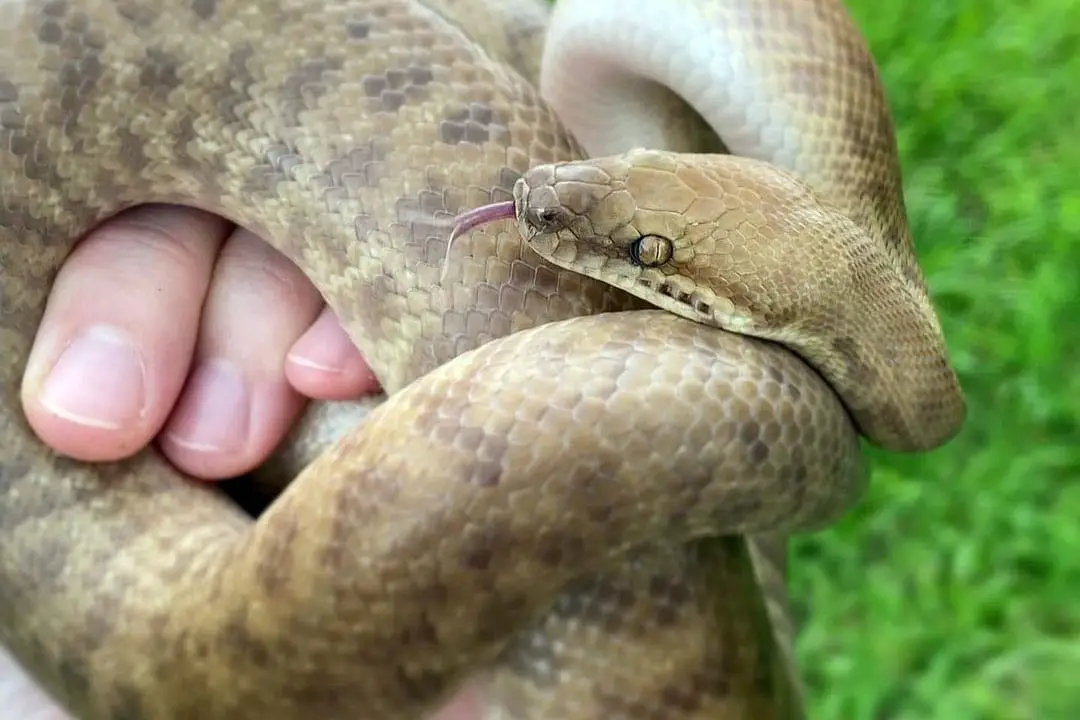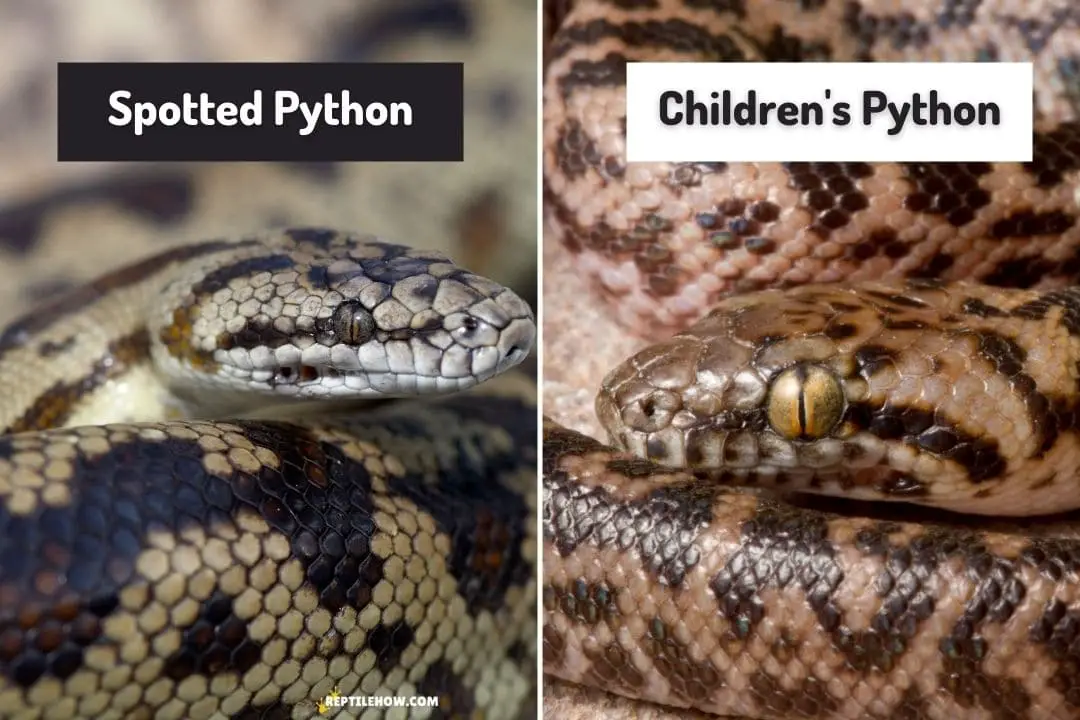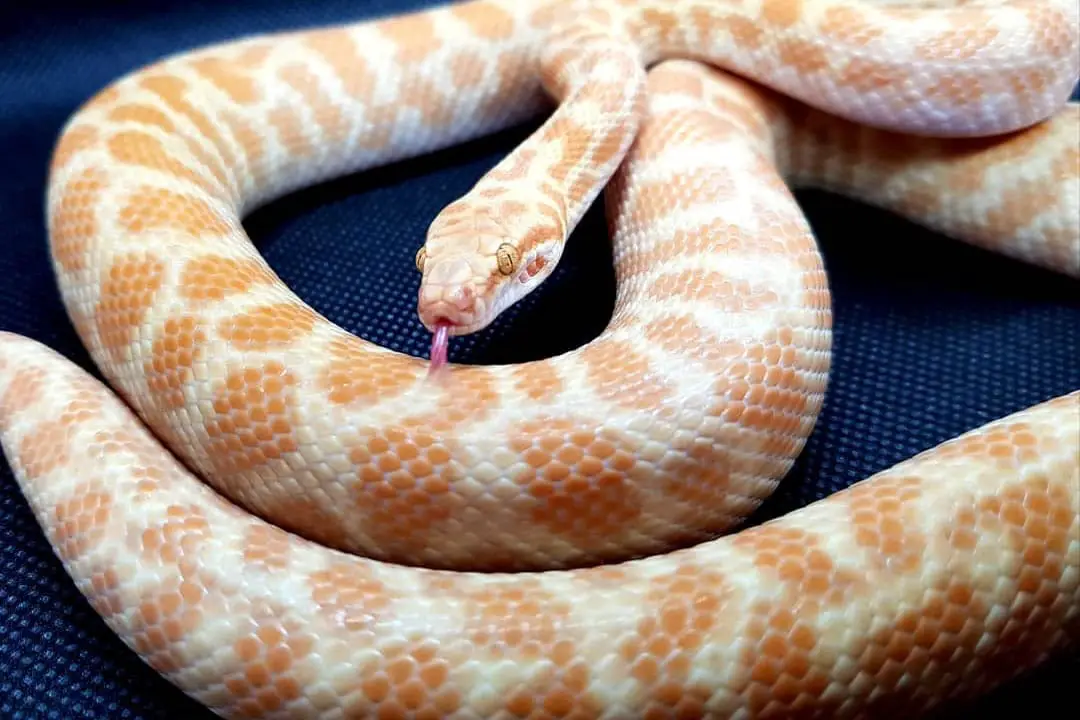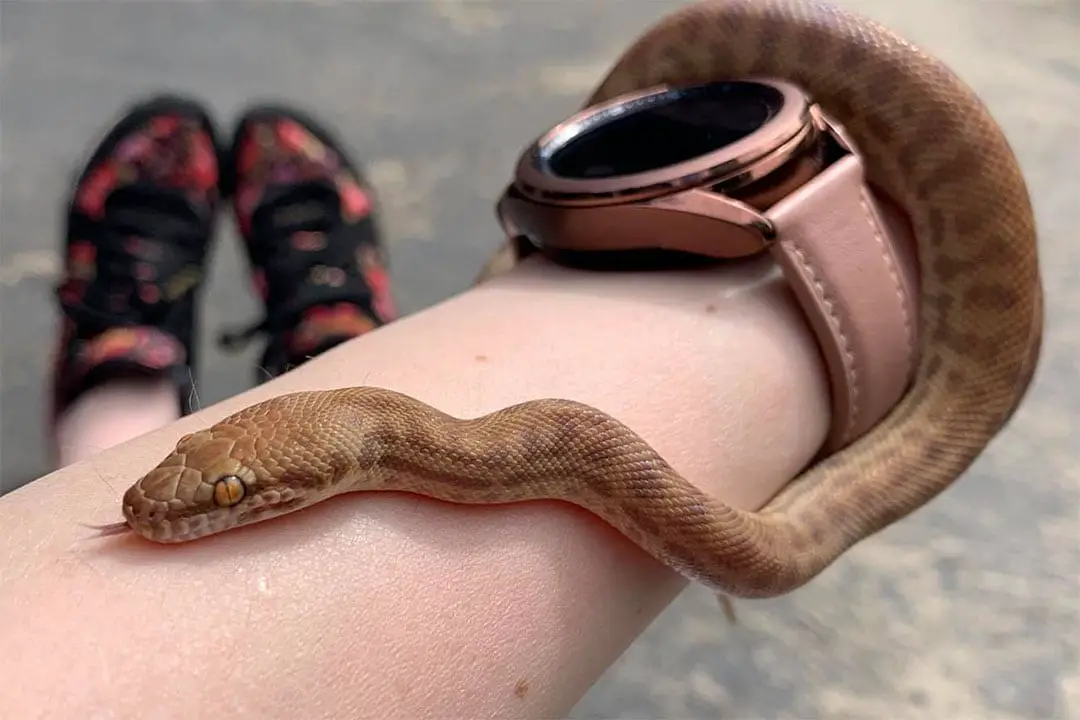The Children’s python (Antaresia childreni) is a small species of non-venomous constrictor snake. They are much smaller than other Australian snakes like the carpet pythons.
You may be wondering:
Do Children’s Pythons Make Good Pets?
As a whole, Children’s pythons make excellent pets. They are tolerant of care mistakes, stay small, feed and breed well, and are very docile. Just be gentle with them during handling.
What Makes a Good Pet Snake?
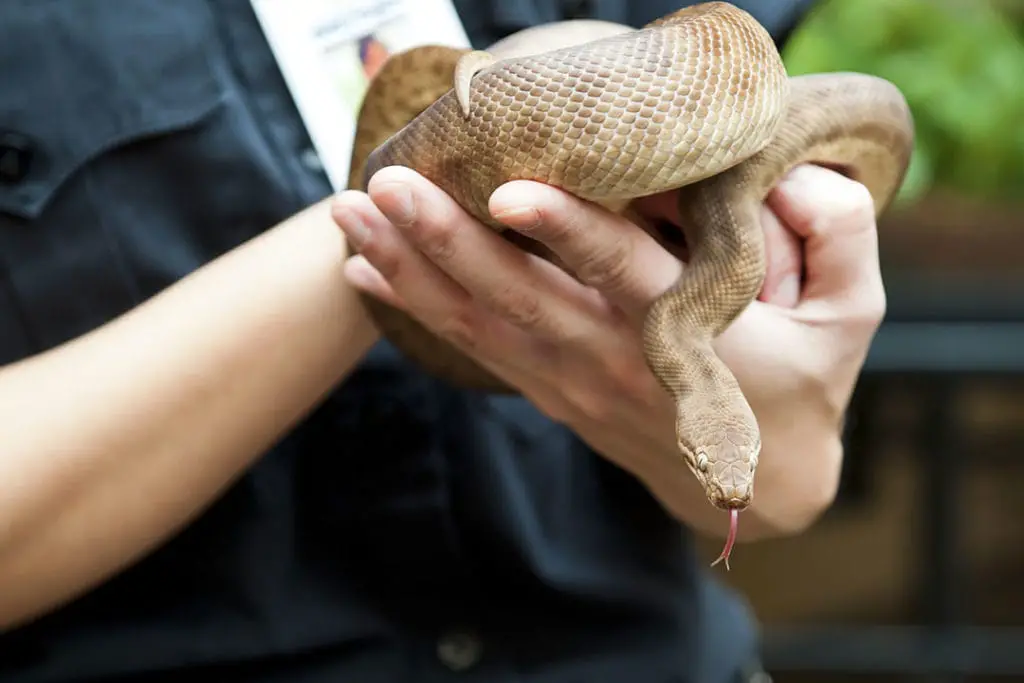
Different people can disagree on what makes for a good pet snake.
Some people are happy with a display snake to admire, while others want a snake they can handle and interact with. Generally, a good snake for being kept as a pet is not very nervous.
They adapt well to captivity and will stay healthy so long as the keeper does enough research on the species.
It is fairly easy to find food for the snake and oftentimes they will breed in captivity so the wild population isn’t in danger from the pet trade.
Ball pythons breed well and tolerate captivity well since they are very happy to eat rodents.
Something like the egg-eating snakes can be a bit more difficult since it is nearly impossible to feed the babies in captivity.
Snakes like the golden flying snake are too nervous for captivity. Other species may require specific temperatures or humidity and can not tolerate any mistakes.
Snakes that specialize in eating rodents or worms tend to be the easiest to feed.
Most snakes that are commonly recommended as pets are temperate species that do not require very narrow temperature or humidity levels.
They are also typically physically sturdy enough that they will not be injured easily. Docile temperaments are also a bonus. Some species will bite often and this makes them a poor choice for most keepers.
Finally, they shouldn’t be venomous or at least don’t have venom that can harm a human.
The snakes should also typically be under 10 feet and around 30 pounds to make handling easier for the keeper.
Very large snakes will need assistance for any interaction like cleaning or feeding.
Large snakes also need much larger caging or even a whole room to themselves.
Children’s Pythons
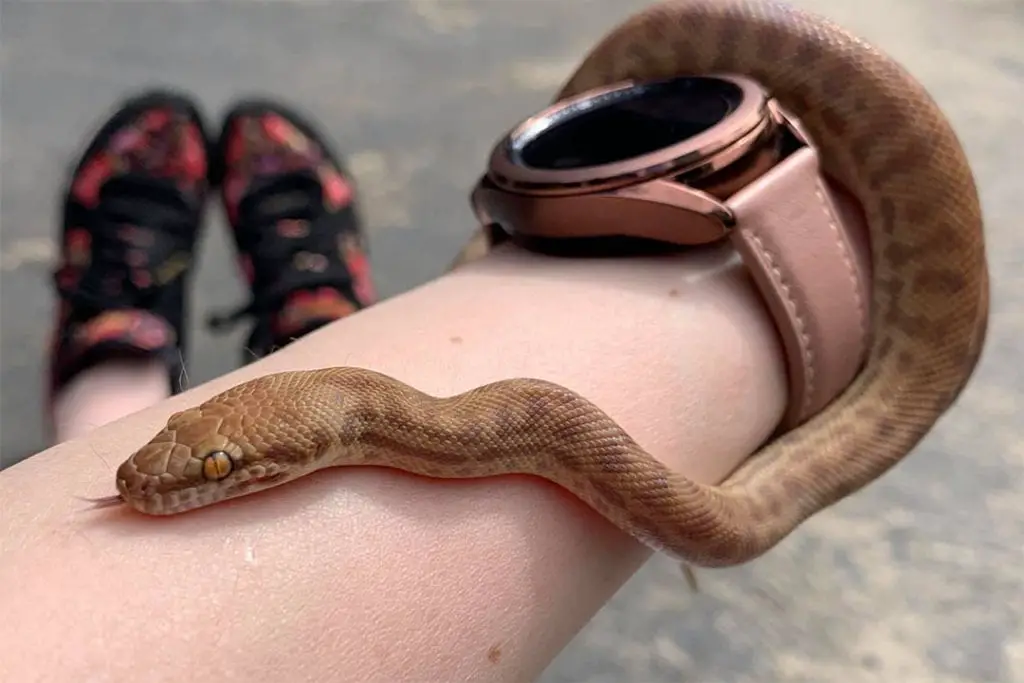
Children’s pythons tick off a lot of boxes for being easy snakes. They tolerate a wider range of temperatures and humidity levels.
They can also tolerate poor conditions long enough for a keeper to notice and fix it even if they miss a day. They are happy to eat rodents since this is a normal part of the diet.
These pythons are also very good feeders in captivity so you can easily get them on frozen and thawed rodents. They will also eat reliably.
You tend to need to worry more about obesity rather than the snake deciding to starve itself. They stay small as well. Even the largest locality rarely gets over 4 feet long, making it easy to handle and house them.
Most keepers will have enough space for an appropriately sized enclosure. They are also semi-arboreal and docile. They will tolerate handling and will hang on so you can worry less about dropping and hurting this species.
They are somewhat delicate compared to a ball python but any adult should be capable of being gentle enough to avoid injuring their pet Children’s python.
This is a snake that kills with constriction as well, so it cannot cause serious harm. The worst you may get is some bleeding from a bite if you really bother the snake.
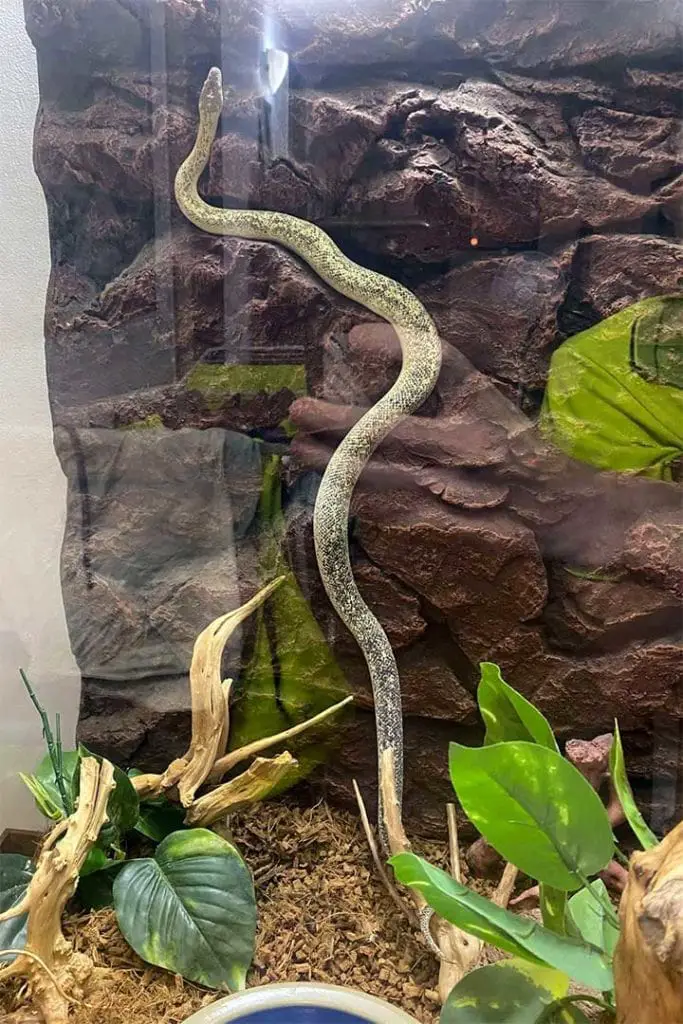
They are very calm snakes with docile and curious personalities. During handling, most adults will be hanging onto you and trying to explore. Since they are also active snakes, you will likely be able to enjoy watching your snake as it explores its enclosure.
Switching up the decorations will result in your snake crawling all over to see what you changed. They tend to make very good snakes for beginners since they are so calm.
One of the biggest challenges with the species is making sure you don’t overfeed, keeping the right humidity up, and offering enough space for exercise.
Since they are semi-arboreal, they will want to climb the entire enclosure. You need to provide several sturdy climbing structures and offer multiple levels for the snake to explore.
They absolutely must be housed in a taller enclosure.
The short enclosures are not enough and even the regular height like 2 feet might be a bit low if your particular snake likes getting up high. This species eats bats in the wild by hanging from stalactites in caves.
This means they frequently want to be up high. However, you do not need very long enclosures for this species. Unless your snake is very long, most will be very happy in a 4-foot long enclosure as an adult.
This means it can be easier for those with less space to keep this snake.
Notes for Beginners
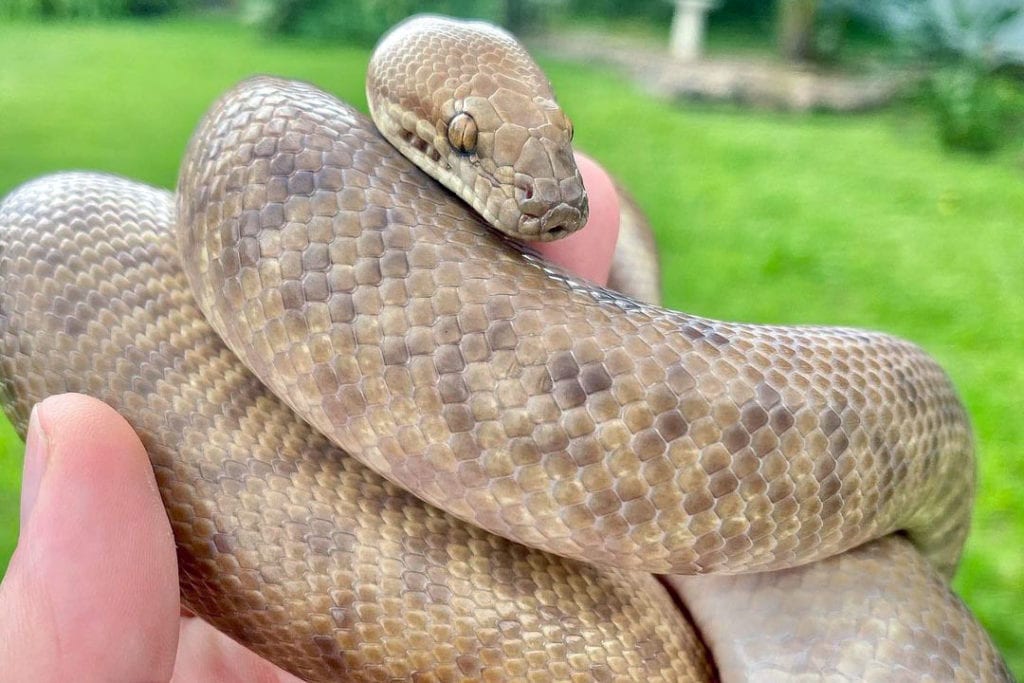
If you are considering a Children’s python as your first snake, here are a few tips to make your life with your new snake easier.
First, look up some good videos on snake body language. Understanding how your pet expresses itself will help you properly interpret its signals.
If you got a snake that is not an adult, accept that it will likely be more defensive. It may even try to bite you. A baby snake can’t cause much damage.
Being bitten by a baby Children’s python is not very painful but can be startling. If you are nervous, wear thick gloves like gardening gloves while handling.
You should also try hook training your snake. By gently touching it with a snake hook or paper towel tube before handling or cleaning, you teach your snake not to snap looking for food when you open the enclosure.
Also, you don’t need to feed snakes as often as mammals.
Many new keepers accidentally overfeed their snakes since they are afraid they are starving their pets. Once a week is enough for a baby and every two weeks for an adult.
Be sure to give your new snake at least a week alone when you first get it to settle in. Also, don’t go in every day to change up the enclosure.
Give your snake a chance to settle in. Snakes prefer gradual changes unless it is time for your monthly deep cleaning. Watch for how your snake uses the enclosure.
If it is always avoiding the basking area, lower the temperature by one degree a day until the snake uses it. If it won’t leave the basking area, raise the temperature slowly.
Keep changes gradual and be patient with your new pet. Also, add more cover than you think your snake needs. They like to be secure as babies.
Conclusion
Children’s pythons make great pets. If you want a new snake, consider this species. If you have any questions or comments, please leave them below.
